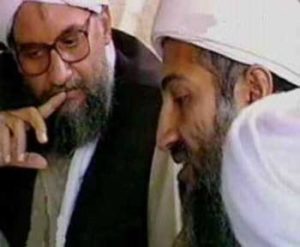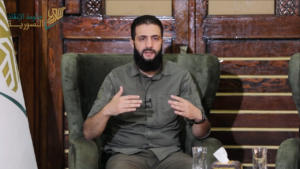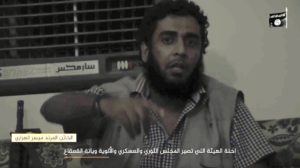On 29 June 2009, the Jordanian journalist Murad Batal al-Shishani published an article in al-Hayat titled “Salafi–Jihadism: A New Face in Jordan, Lebanon, and Syria’s Palestinian Camps.” The article talks about the new generation of “neo-Zarqawis” and the increasing radicalization of Palestinian refugees. This radicalisation, he argues, stems from the failure to resolve the Arab-Israeli Conflict, the deterioration of the PLO and its control over the refugee camps, the political ramifications of the Fatah-Hamas conflict, and rising poverty and unemployment. Al-Shishani states that attacks such as the 2008 incident in Jordan where Thaer al-Wahidi, a refugee from the al-Baq’ah refugee camp, assaulted a Lebanese classical music troupe, are emblematic of this phenomenon.
Al-Shishani argues that the Salafi-jihadi ideology in the refugee camps has come in three phases. The first was the establishment of the ideology in the mid-1980s. The establishment of ‘Usbat al-Ansar in the Ain al-Hilweh refugee camp in southern Lebanon was typical of this phase. According to al-Shishani, this period witnessed the beginning of nationalist groups using Islamic slogans and the establishment of Hamas and the Islamic Jihad.
Al-Shishani writes that the second phase was when the Salafi-jihadis started playing a larger role in sheltering and training non-Palestinian Salafi-jihadis. Al-Shishani cited the 2003 bombing of the McDonalds in Lebanon by the Yemeni Muammar al-Awami as an example of this development.
According to al-Shishani, the third phase is when the Salafi-jihadi ideology becomes the primary ideology for Palestinian youth in the camps. This phase is occurring now, as individuals and small groups are increasingly taking up the ideology. Al-Shishani states that the members of this new generation “are described as ‘neo-Zarqawis,’” and are the legacy of the Levantine Salafi-jihadi current that Abu Musab al-Zarqawi started in his Afghan training camp in 2000. They believe the route to Israel is through Iraq. Al-Shishani maintains that this trend is regional, centering on Iraq, Syria, Jordan, and Lebanon, and it rejects the Salafi-jihadism of Abu Muhammad al-Maqdisi (more on the al-Maqdisi dispute here and here).
In describing the Salafi-jihadi situation in Jordan, al-Shishani states that the refugee camp in Irbid has become a transit point for foreign fighters headed to Iraq and this is important because commentators normally associate Salafi-jihadism in Jordan with the cities of Zarqa, Salt, and Maan in addition to Palestinians not living in camps and East Jordanians. According to al-Shishani, Irbid is where the leader of al-Wahidi’s cell, Shakir ‘Umar al-Khatib, recruited al-Wahidi and called on Palestinians to join “the fighters in Iraq and Lebanon.”
For Lebanon, al-Shishani agrees with Omayma Abdel-Latif, a research associate at the Carnegie Endowment’s Middle East Center, that Lebanon is “fertile ground” for radical Salafi organizations. The lack of official Lebanese control over the camps, due to a previous agreement between Palestinian factions and the Lebanese government, compounds this threat.
Unfortunately, due to the lack of information, al-Shishani does not provide many details of the situation in Syria except to say that there have been clashes between militants in the Yarmuk refugee camp and the Syrian government.
The study of Salafi-jihadism in the Levant often takes a backseat to that of Iraq and AfPak, and to that of Hamas and Hezbollah, but, as al-Shishani indicates, the ideology does have a persistent and dangerous following in the region. If the modicum of stability that Iraq currently enjoys holds after the US withdrawal, the next logical endpoint for the neo-Zarqawis would be the Palestinian Territories, where they could act as spoilers to any possible peace initiatives.





3 Responses
Thanks Scott for this great Shishani’s article and for your comments !!!
For people who want to have more knowledge about the Salafi-Jihadism in the Levant, I would advise to read the book called ” Everyday Jihad
The Rise of Militant Islam among Palestinians in Lebanon” and get some time to watch the following conference by Bernard Rougier: http://fora.tv/2007/04/13/Sunni_Radicalism
Bernard Rougier is a French researcher who has been conducting extensive field research with a focus on the refugee camp of Ain al-Helweh. Bernard Rougier has a deep knowledge about the salafi-jihadist movements in the Levant (and especially in Lebanon) and the current trends going on…
The fact that salafi-jihadists undermine Palestinians organizations (such as PLO or Hamas) is not something new because it was happening when the PLO was in Beirut during the 80’s.
For me, the new trend is that these Palestinians organizations seems for the first time very worried about the growing support of radical Salafi organizations. Jihadi leaders are currently printing al-Qaeda propaganda for distribution in the Gaza strip and tensions with Hamas are raising… I think this is also why there is the rumor about Hamas and Jihad Islamique merging together !!! When the threat is coming from a third party, it’s time to be serious and be united (even if having Jihad Islamic and Hamas together seems very strange !!!).
“Al-Shishani maintains that this trend…rejects the Salafi-jihadism of Abu Muhammad al-Maqdisi (more on the al-Maqdisi dispute here and here).”
How so?
Ben is right to flag Bernard Rougier’s excellent book on the rise of Salafi-jihadist groups in Palestinian refugee camps in Lebanon. Also useful for broader context is Sahar Atrache’s February 2009 piece for International Crisis Group, Nurturing Instability: Lebanon’s Palestinian Refugee Camps.
One thing that is striking in Lebanon is the extent to which the organizational development of jihadist groups varies heavily from camp to camp, depending on local political conditions. Nahr al-Barid camp was something of a political vacuum, which facilitated the growth of Fateh al-Islam. By contrast, the traditional Palestinian factions were stronger and more organized in nearby Baddawi, and essentially prevent FAI from organizing there (even handing their cadres over to the LAF).
In the south, Ayn al-Hilwa is something akin to the wild west of Lebanese refugee camps, characterized by a dynamic and unstable balance of power between competing groups (and often strains within them). This creates space for the growth of jihadist groups, but also prevents their ascendency NBC-style. Other camps in the south tend to have predominate faction(s), again comparatively limiting jihadist growth.